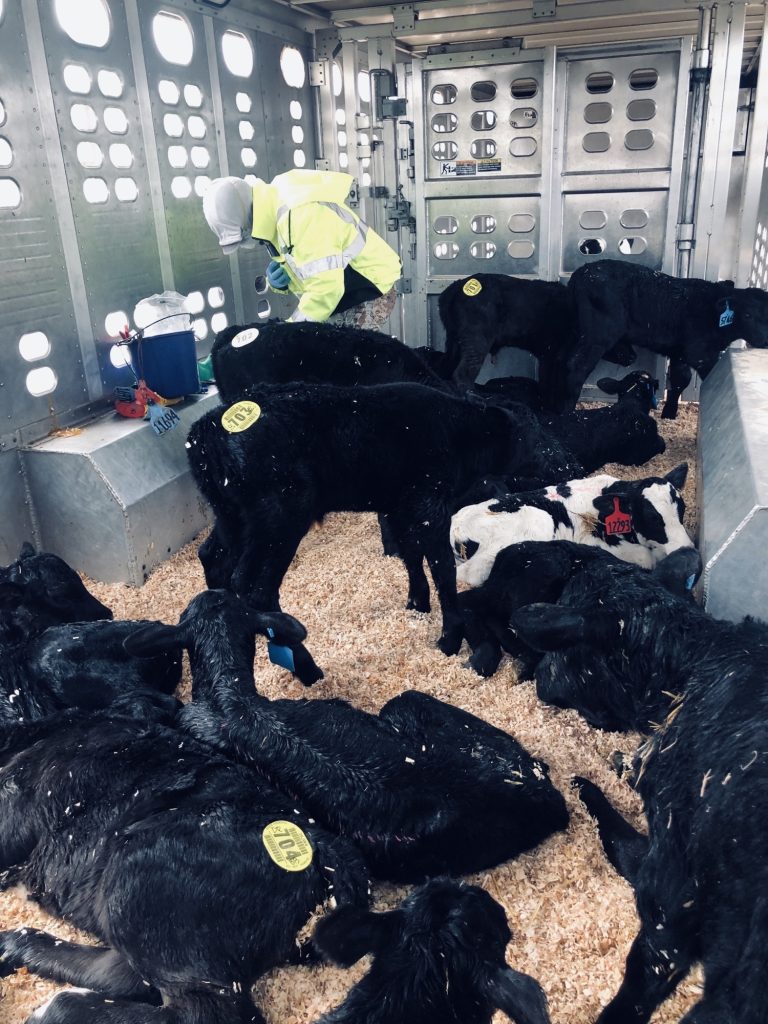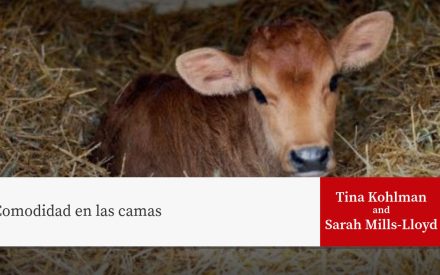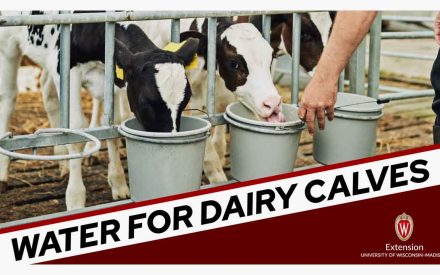As operations grow, or focus more on the milking herd, it has become a necessary component in moving newborn calves from the farm to a separate calf raising facility, some being out of state. Handling and transporting these calves can be stressful. However, there is limited research on the impact of long-distance travel on a newborn calf’s welfare.
Transportation of any animal can be stressful, but perhaps more so for newborn calves. Calves are at an increased risk for health and welfare issues than their older counterparts due to a naïve immune system and their inability to thermoregulate their body temperatures. Other stressors impacting a calf’s welfare includes handling, loading, and weighing animals in a new environment, regrouping with unfamiliar animals, exposure to new pathogens, limited food and water during transport, and fluctuating temperatures. Research in the 90’s indicates few calves die during actual transport but die from a secondary infection within the following 4 weeks after transporting due to suppression of the immune system from stress.
With limited research on the welfare impact of calves transported long-distances, we can still provide best management practices to minimize stress and improve calf welfare.

Fit to transport
In preparation for transport, the Association of Bovine Practitioners (AABP) recommends calves receive adequate amounts of high-quality colostrum or an appropriate colostrum replacement at birth to introduce immunoglobulins into the calf to jump start the immune system. Also, calves should be well-fed before transport, being provided milk an hour before loading as well as access to fresh water and feed prior to loading. Electrolytes could be provided proactively before loading calves to minimize dehydration on long trips. Calves need to be dry, well hydrated, alert, and fit for transport. What makes a calf fit for transport? According to AABP, fitness for transport refers to “the calf’s ability to withstand transportation without compromising their welfare”.
Space
The trailer or transport for the calves should be well designed to ensure calves arrive at their destination injury free. Trailers should have a solid-face front to protect the calves from wind, but enough side and top openings to provide ventilation while minimizing draft in the winter. The trailer should also protect from sunlight and excessive heat.
The trailer and other handling equipment should be washed and disinfected to reduce the calves’ exposure to pathogens. Enough clean, dry bedding should be added for each new group of calves being transported, providing comfort for lying down, nesting for colder months of the year, traction for standing, and absorption for urine.
Calves should have plenty of space to lie down while being transported. There should also be plenty of space to avoid the risk of being stepped on by other calves that are standing. Calves should not be overcrowded. The Veal Quality Assurance Certification Resource Manual recommends young calves weighing 100 and 150 pounds to be stocked at a density of 2.6 and 2.2, respectively, animals per linear foot, based on a 7.7-foot-wide trailer. The Federation of Animal Science Societies recommends providing a minimum of 3.5 square feet per 200-pound calf, while Ohio State University and the Vermont Livestock Care Standards Advisory Council suggests 4 square feet for 0- to 2-month-old calves. The recently published Calf Care Quality Assurance program states: pre-weaned calves should be stocked at low-density during transport that allows each calf to lie down throughout the journey. There should be enough space, so they are not at risk of being stepped on by animals that are standing.
Time
Dairy Beef Quality Assurance Program recommends calves to be a minimum of 3 days old at the time of transport. In Canada, calves may be transported up to 12 hours at a time if they aren’t subject to dehydration, starvation, or exhaustion. After 12 hours they must be given feed, water, and rest. Calf Care Quality Assurance guidelines suggest travel route for calves be less than 24 hours and provide electrolytes and feed for travel over 24 hours.
Transportation of weaned calves can be stressful but adopting a few best management practices can help reduce stress and improve calf welfare for those calves who go on the long haul.
Download Article

 ▶️ Watch: Programas intensivos de alimentación en terneras
▶️ Watch: Programas intensivos de alimentación en terneras Comodidad en las camas
Comodidad en las camas The importance of water for dairy calves
The importance of water for dairy calves ▶️ Watch: New Concepts in Colostrum Feeding for Dairy Calves
▶️ Watch: New Concepts in Colostrum Feeding for Dairy Calves


